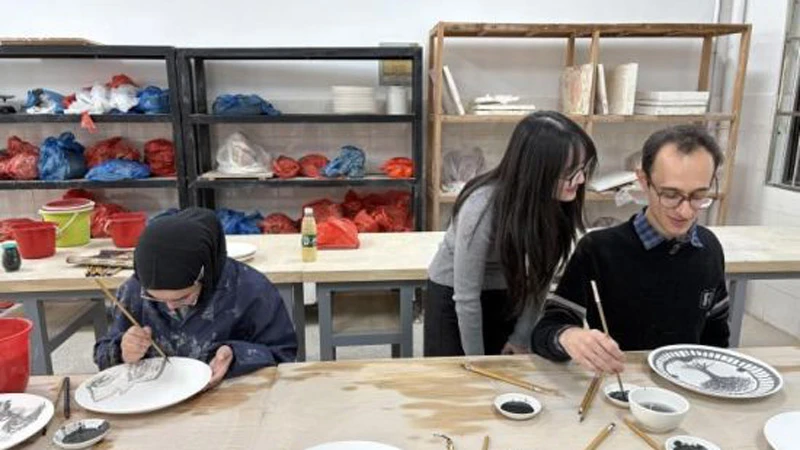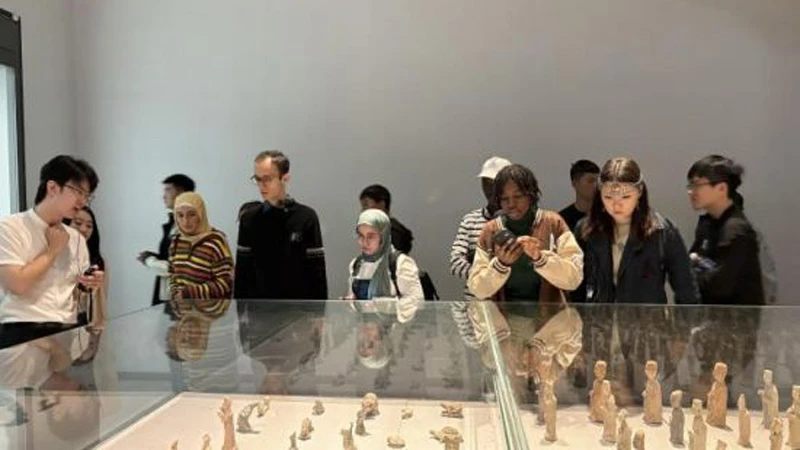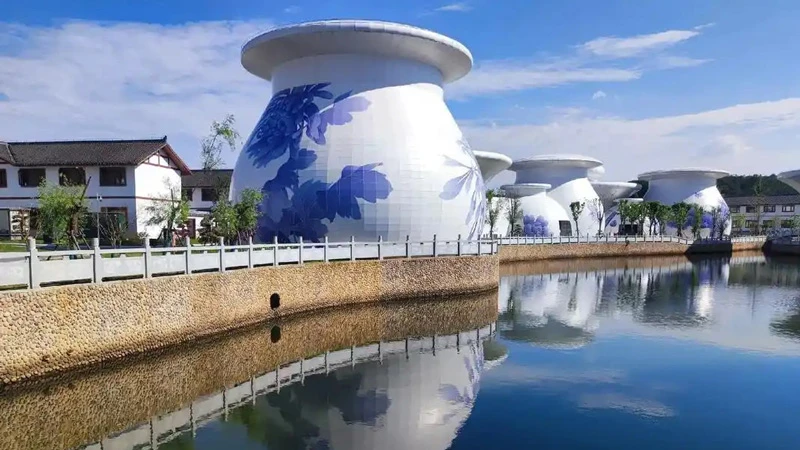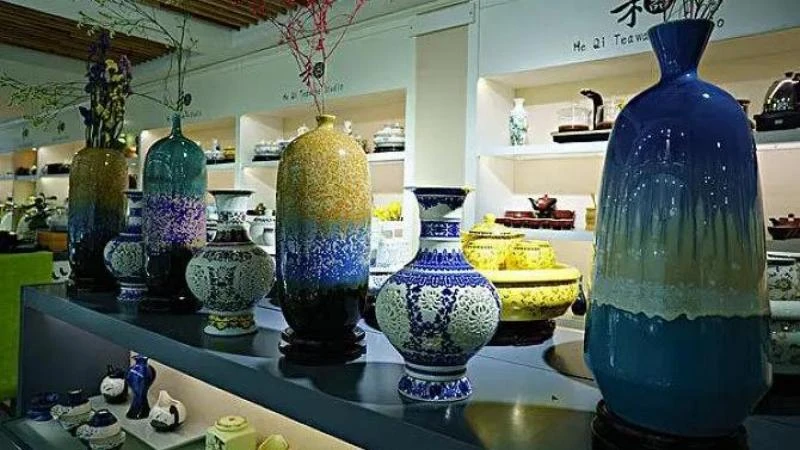Jingdezhen (景德镇), a city steeped in over two thousand years of ceramic history, continues to captivate the world with its unparalleled porcelain craftsmanship. For many international students, this ancient city in Jiangxi Province represents more than just a place to study—it symbolizes a chance to connect with a vital piece of China's cultural heritage. A recent visit by students from Morocco, Mozambique, Kazakhstan, and Iran highlights the global allure of Jingdezhen's porcelain and the profound influence of Chinese traditional arts in fostering cross-cultural understanding.
In early November, a group of international students, organized by the Jiangxi International Communication Universities Alliance, travelled to the heart of China's porcelain industry to explore the world of ceramics. Their journey through the China Ceramic Museum and the Imperial Kiln Museum allowed them to witness firsthand the beauty and complexity of Chinese porcelain, which has been an integral part of both Eastern and Western cultural exchanges for centuries. As they strolled through the galleries, they were struck by the intricate designs and the historical significance of the pieces, some of which date back to the Tang Dynasty.
"Seeing the porcelain in the museums was like reading a history book," says Song Yiren (宋伊人), a student from Mozambique at Jiangxi University of Finance and Economics. "Each piece tells a story, not just about art, but about China's long and rich cultural heritage." For these students, the experience wasn't merely an educational field trip—it was a journey into the essence of Chinese civilization.

Ceramics as a Cultural Bridge
Jingdezhen's rich ceramic legacy is known worldwide. With a history spanning over 2,000 years, it has earned its reputation as the "Porcelain Capital" of China. The city is particularly famous for its refined porcelain, once dubbed "white gold" in Europe. These ceramics represent more than just artistic beauty—they embody the continuity of craftsmanship, technology, and tradition passed down through generations.
For Robert, a PhD student in design at Jingdezhen Ceramic University from Uganda, ceramics have been a long-standing fascination. "When I was young, I always wondered how the ceramic bowls in my home were made. Coming to Jingdezhen to study ceramics was a dream come true," he says. In his work, Robert blends African and Chinese artistic elements, creating a unique fusion that reflects the global nature of his ceramic education.
Ceramic art, particularly porcelain's delicate and intricate art, has historically acted as a bridge between East and West. As Robert's works demonstrate, these ancient techniques continue to evolve and inspire new forms of artistic expression.
Hands-on Learning: Crafting Stories in Clay
The students' visit to Jingdezhen wasn't limited to museum tours; they also had the opportunity to engage directly with the craft through hands-on workshops. One of the highlights of their visit was participating in the pottery-making process at the Jingdezhen Ceramic University. Here, students tried their hand at the meticulous craft of wheel throwing, an essential technique in porcelain making.
Song Yiren, for example, was eager to try her skills at throwing a ceramic bowl on the potter's wheel. "It looks easy when the instructor does it, but there's so much more to it than it appears," she says, concentrating on forming her bowl. "It's about the right pressure, speed, and the perfect balance of clay. It takes practice to master." Capturing the entire process on her phone, she wanted to share these experiences with her family and friends back home. "It's not just about making a bowl. It's about understanding the culture behind it," she adds.
Similarly, Zohra Anah, a student from Morocco at Jiangxi Science and Technology Normal University, successfully crafted her unique bowl. "It's my first time trying this, but I hope to fire it and send it to my Chinese language teacher as a gift," she says, her face lighting up with pride. Anah, who was first introduced to Chinese culture through the Confucius Institute in Morocco, describes her journey into ceramics as a natural extension of her interest in China's traditions. "I've always been fascinated by Chinese culture, especially the ceramics. Seeing them in person has deepened my understanding," she says.
The Power of Art to Connect Cultures
While the art of porcelain is deeply rooted in Chinese history, it is clear that the beauty of Jingdezhen's ceramics transcends cultural boundaries. The international students' personal experiences illustrate the universal appeal of traditional Chinese craftsmanship and its power to connect people from different corners of the world. During their painting workshop on blue-and-white porcelain, each student put their personal touch on their piece. Zohra Anah painted a traditional Chinese landscape, while Song Yiren wrote her Chinese name on a plate. Even Shina, a student from Iran, created a painting of a tree, symbolizing longevity and resilience.
While their works may not exhibit the refined perfection of master potters, they are imbued with personal meaning and shared aspirations. "It's about more than just creating an object," explains Shina. "It's about expressing something meaningful, a personal connection to the culture."
The students' experiences in Jingdezhen also testify to the growing global interest in Chinese culture. For many of these students, the trip to Jingdezhen is not just a visit to a historic city; it's a step toward a lifelong journey of learning, sharing, and promoting the richness of Chinese tradition. "I hope to become a Chinese language teacher in the future," says Zohra. "Through teaching, I want to share the beauty of Chinese culture with more people."
As these students return to their home countries, they carry new skills and experiences with them and a deeper appreciation for the interconnectedness of the world's cultures. Through porcelain art, Jingdezhen continues to shine as a beacon of cultural exchange, proving that the language of clay can speak to people of all backgrounds and forge bonds that last beyond borders.



